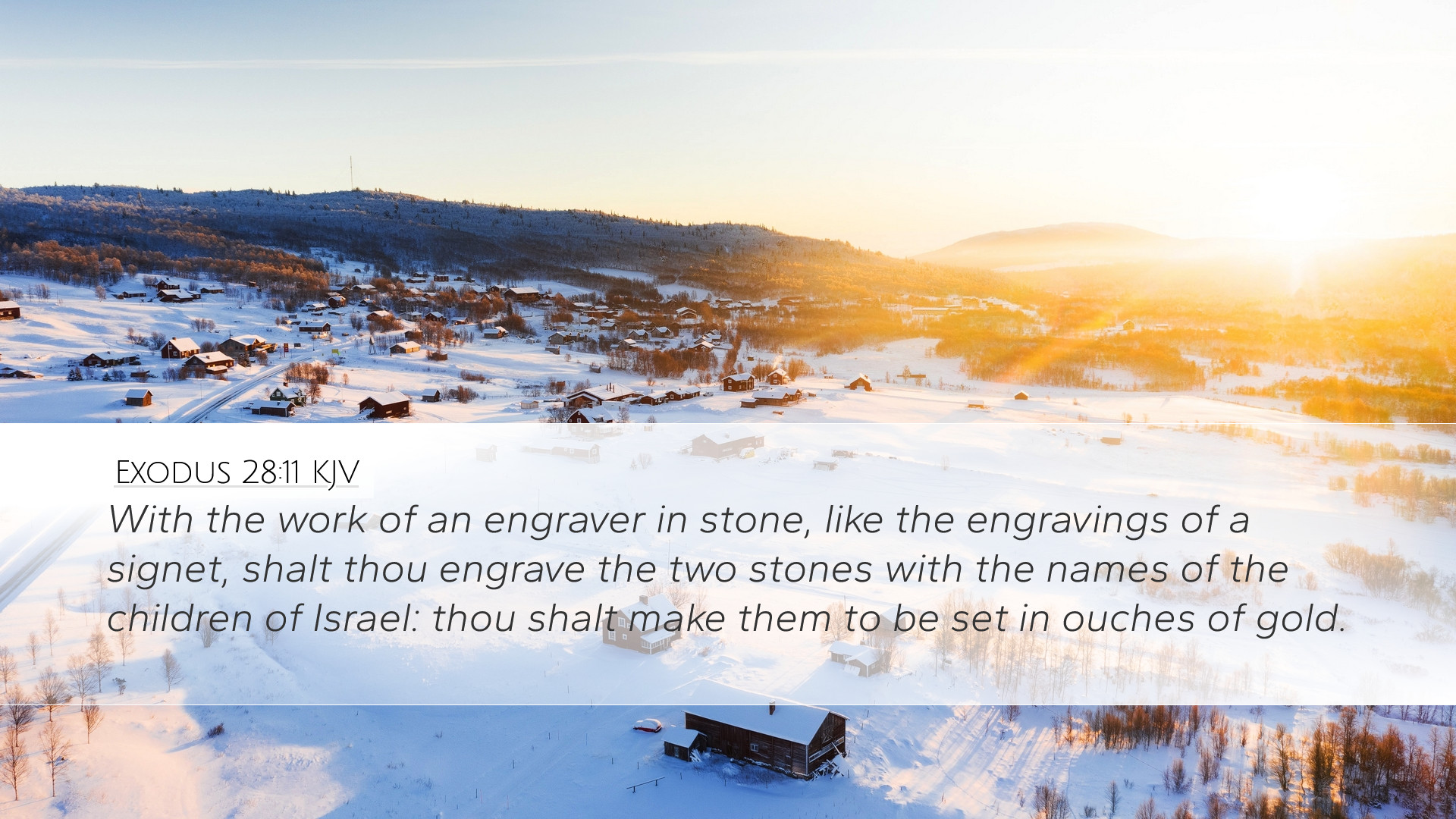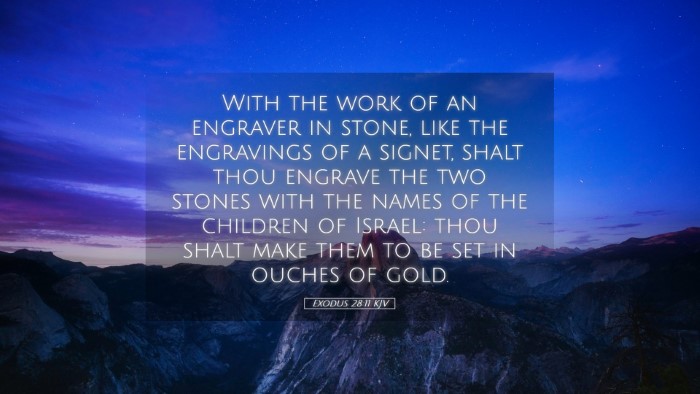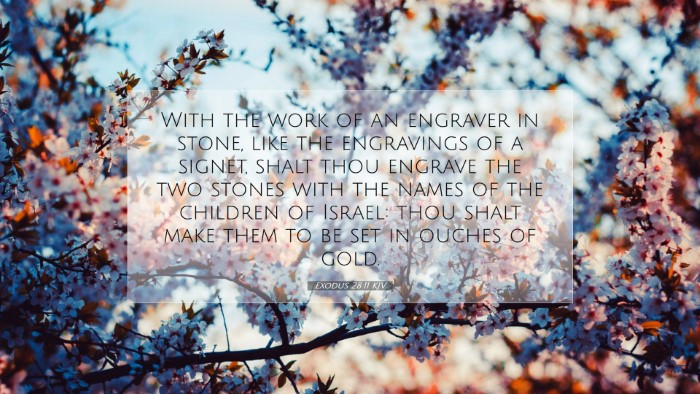Exodus 28:11 Commentary
Verse Text: "With the work of an engraver in stone, like the engravings of a signet, you shall engrave the two stones with the names of the sons of Israel. You shall set them in settings of gold."
Introduction
The instructions surrounding the high priest's garments, detailed in Exodus 28, provide profound insights into the nature of priesthood, divine service, and covenant relationship between God and Israel. In this particular verse, the process of engraving the precious stones signifies not only the personal representation of the tribes before God but also the everlasting nature of His covenant with His people.
Insight from Matthew Henry
Henry elaborates on the significance of the high priest's attire, especially concerning the engraved stones bearing the names of the Israelites. He notes:
- The engravings represent a reminder to God of His people—a visual cue during intercession.
- The choice of stones reflects the precious value of the tribes in the sight of God, reminding us of the believer's worth.
- The high priest acts as a mediator, bringing the concerns of the people before the Lord, symbolized by the stones mounted on his shoulders.
Insight from Albert Barnes
Barnes emphasizes the craftsmanship involved in creating the high priest's garments and particularly the two onyx stones:
- Each stone is intricately designed, emphasizing the importance of meticulous work in sacred matters.
- The stones symbolize unity among the tribes of Israel, highlighting that the high priest carries them as one collective body.
- Barnes further explains that these engravings are akin to royal insignia, suggesting the royal priesthood to which God has called His people.
Insight from Adam Clarke
Clark delves into the cultural and historical context of the engravings:
- The explicit mention of engraving signifies permanence; the names of the tribes are etched with care to signify their continual representation before God.
- Clarke draws parallels to modern practices of remembrance and representation in Christian liturgy, underlining the lasting bond between God and His covenant community.
- He also emphasizes the significance of the gold settings, which not only serve a practical purpose but also symbolize the glory and majesty of God attentive to His people.
Theological Reflections
This rich tapestry of commentary reveals several theological nuances:
- Covenant Identity: The engraved stones embody God's promise and His perpetual relationship with Israel, echoing the significance of our own identities as co-heirs in Christ.
- Mediation of Christ: As the ultimate high priest, Jesus bears us before the Father, fulfilling the symbolic role presented in Exodus 28, representing each believer personally.
- Community Representation: Just as the tribes are represented, the concept encourages a recognition of our responsibility to advocate for our communities under God's jurisdiction.
Practical Application
Studying this verse leads to several practical applications for modern believers:
- Emphasize the importance of intercessory prayer, recognizing we carry the names of others before God.
- Encourage the church to reflect the unity among believers, seeing themselves as a collective body.
- Remind individuals of their worth in God's eyes, as represented through the priestly garments.
Conclusion
Exodus 28:11 serves as a powerful reminder of the enduring relationship between God and His people, illustrated through the imagery of engraved stones on the high priest's garments. For pastors, students, theologians, and Bible scholars, it invites deeper reflection on the implications of priesthood, covenant, and community in our ongoing journey of faith.


